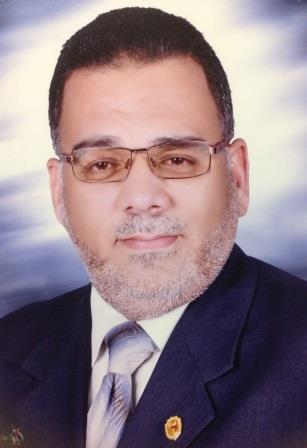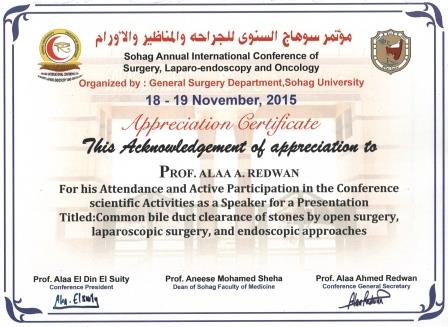Abstract:
Background and aim of the work: Around 10-18% of people undergoing cholecystectomy for gallstones have common bile duct (CBD) stones1. Treatment can be conducted as open cholecystectomy plus open common bile duct exploration, laparoscopic cholecystectomy plus laparoscopic common bile duct exploration (LCBDE), or pre- or post-cholecystectomy ERCP in two stages for CBD clearance1. The aim of this study is to compare CBD clearance rate by each procedure in a well-equipped tertiary centers
Patients and methods: 250 cases of choledocholithiasis were included from general surgery department, Sohag and Assuit university hospitals and managed randomly by either conventional surgery, endoscopic, or laparoscopic procedures
Results: Ages of our patients were ranged from 20-60 years (mean 40 years), with slight female predominance (1.6: 1), most of them presented with calcular obstruction (54.3%), however other presentations are also encountered as colic, cholangitis, or accidental discovery in 14.3, 10, 21.5% respectively. Patients were categorized randomly into 3 groups:
Group I included 100 patients (40%) were treated by open choledocholithotomy and T tube insertion, the operative time was 90 (60-180) min. with success rate of the attempted procedures reaching 100%, and CBD clearance of stones was achieved in 95% of cases (5 cases of missed stones), hospital stay was 8 (5-12) days, with no mortality and morbidity rate reaches 15% in the form of wound infection, bile leak, and missed stone. The patient can return to work after 2 weeks (12-20 days).
Group II included 100 cases (40%) treated by endoscopic sphincterotomy and basket extraction in 45%, balloon in 25%, combined maneuver in 15%, mechanical lithotripsy in 13%, with failure of the technique in two cases (2%), the procedure time was about 30 (20-45) min. with success rate of attempted procedure 98% and CBD clearance of stones was achieved by 100%, with no mortality, and morbidity rate of 9% in the form of cholangitis (3%) and mild pancreatitis with hyperamylasemia (6%), the period of hospital stay was 1 (1-2) days, and patient return to work after 3 (2-5)days.
Group III included 50 cases (20%) treated by laparoscopic approaches either by trans-cystic approaches in 5 cases, or trans-choledochotomy approaches in 45 cases. Choledochoscopic exploration was done in almost all cases (45 cases) to detect, extract the stones and test CBD clearance, and conversion to open techniques in 1 case. The time needed for this procedure was 123 (70-292) min. with CBD clearance of stones in 96% (2 cases of missed stone), with no mortality, and morbidity rate about 10% in the form of mild hyperamylasemia, fever, and missed stone. The period of hospital stay was 3.2 (2-4) days with return to the work after 7 (5-10) days.
Conclusion: Both ERCP/LC and LCBDE were highly effective in CBD clearance, and equivalent in overall cost and patient acceptance. However, the overall duration of hospitalization was shorter for LCBDE with elimination of the potential risks of ERCP associated pancreatitis, further procedure, and anesthesia risks. It is feasible, cost-effective, and ultimately should be available for most patients in each specialized center.


